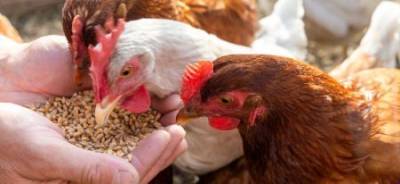HYDERABAD, 28 June 2025: India’s ambitious 20% ethanol blending target, aimed at slashing crude oil imports and cutting carbon emissions, is creating serious trouble for India’s poultry farmers. Maize, one of the main feedstocks for ethanol, is becoming costlier as more of it is diverted to biofuel production, hitting small chicken farmers hard.
Small farmers squeezed by feed price rise
In Ghazipur, farmer Satyadev Prajapati, who owns 350 hens, said the price of poultry feed has shot up by 40% over the past year. “If maize prices go up, but egg prices don’t, it hits us directly,” he explained. He’s resorted to cheaper, lower-quality feed, which means fewer eggs are being laid.
India’s maize-based ethanol production has jumped from 1 million metric tonnes in 2022 to over 6 million metric tonnes in 2024 and is projected to rise to 11 million metric tonnes by 2025.
Ethanol benefits come at a cost
While ethanol blending has saved India ₹1.06 trillion in crude oil imports since 2014 and avoided 54.4 million metric tonnes of CO₂ emissions, it has also squeezed food supplies. Currently, about a third of India’s maize is used for ethanol, while 60% goes to the poultry sector.
Rajeev Ranjan, a maize supplier, said maize prices have risen over 20% in just one year, leaving small poultry farmers with no margin to pass on costs because egg prices are market-driven, as reported context.news
India forced to import maize
India, once a net maize exporter, is now importing the grain to stabilize prices. According to a think tank report, India’s current maize demand — for food, fuel, liquor and industrial uses — already exceeds production, and meeting the ethanol target would require dedicating land nearly seven times the size of New York City.
No cushion for small producers
Small poultry farmers face additional hurdles including disease, heatwaves, and credit shortages, making them more vulnerable.
Prince Rajput, a supplier in Varanasi, warned, “Poultry doesn’t seem to be a priority sector for the government. Even getting loans is difficult.”
Second-generation ethanol could help
Experts say second-generation (2G) biofuels made from crop residues instead of food crops could ease the pressure on maize supplies.
“If 2G ethanol becomes commercially viable, it could help India meet blending targets without compromising food security,” said Ramya Natarajan from CSTEP.
She suggested the government define “sustainable ethanol” more clearly and cap the land and water footprint of ethanol production.
Image credit: one5c.com




















